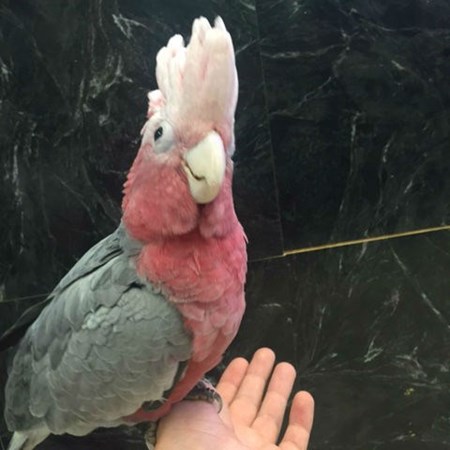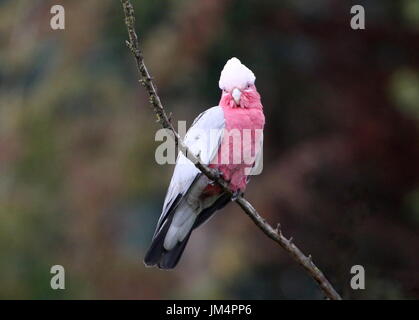

Reader's Digest (Australia) Pty Ltd, Sydney. Reader's Digest Complete Book of Australian Birds (2nd Edition). Angus and Robertson/National Photographic Index of Australian Wildlife, Sydney. Usually only one chick survives, and this will stay in the care of its parents for about six months. The female alone incubates the eggs, while the male supplies her with food. Both sexes construct the nest, which is a large tree hollow, lined with wood chips. Yellow-tailed Black-Cockatoos have a long breeding season, which varies throughout their range. The Yellow-tailed Black-Cockatoo is found in south-eastern Australia, from Eyre Peninsula, South Australia to south and central eastern Queensland. Small to large flocks can be seen in these areas, either perched or flying on slowly flapping wings. The Yellow-tailed Black-Cockatoo inhabits a variety of habitat types, but favours eucalypt woodland and pine plantations. Young birds resemble the adult female, but young males have a smaller cheek patch. The female has a larger yellow cheek patch, pale grey eye-ring (pink in males), white upper bill (grey-black in males) and black marks in the yellow tail panels.
Assimilis rose breasted cockatoo Patch#
It has a yellow cheek patch and yellow panels on the tail. It is easily identified by its mostly black plumage, with most body feathers edged with yellow, not visible at a distance.

The Yellow-tailed Black-Cockatoo is a large cockatoo. In recent years it has been in rapid decline because of native habitat clearance, with a loss of food supply and nest sites. The Yellow-Tailed Black-Cockatoo is one of five species of Black-Cockatoo in Australia.


 0 kommentar(er)
0 kommentar(er)
